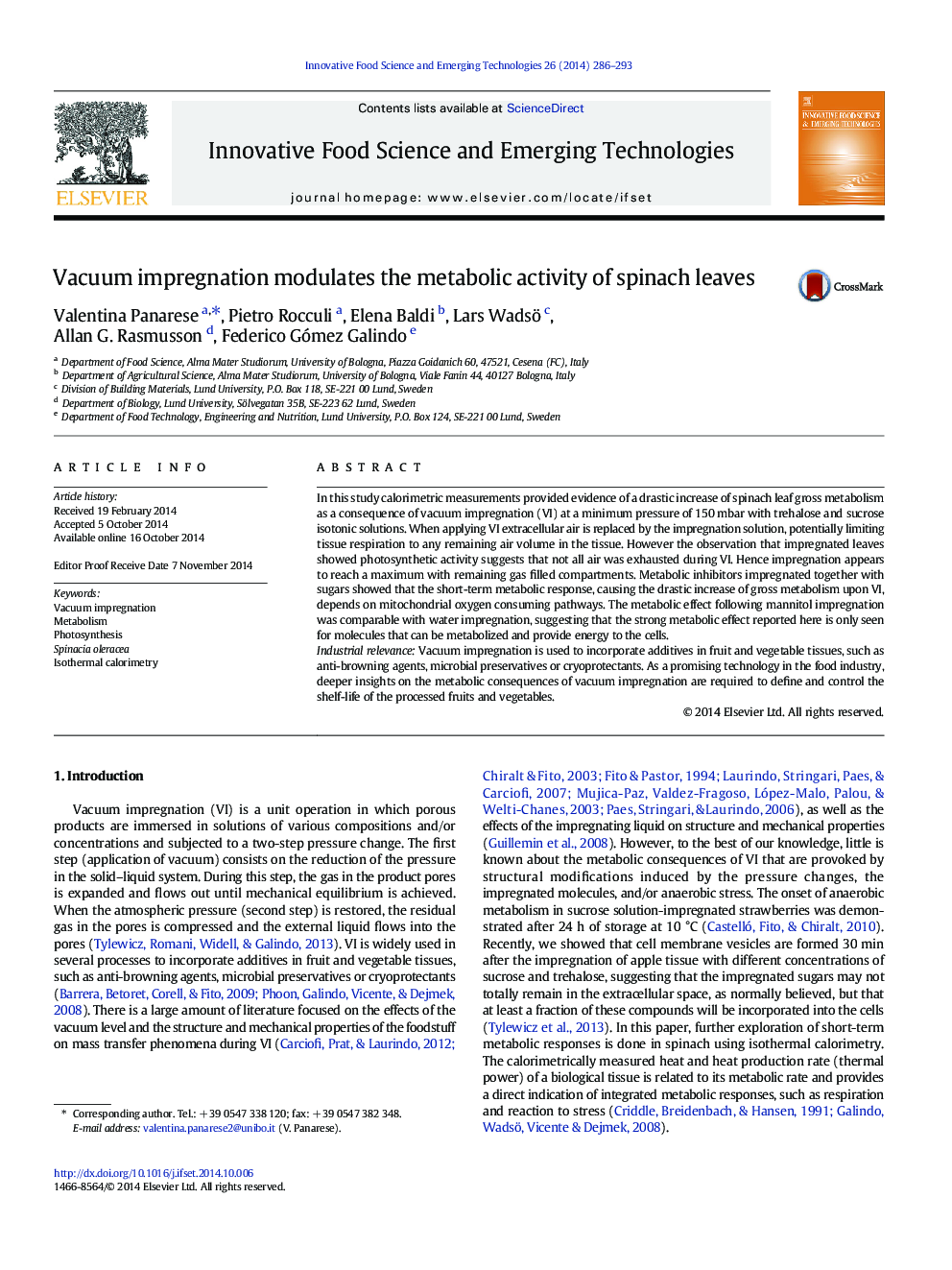| Article ID | Journal | Published Year | Pages | File Type |
|---|---|---|---|---|
| 2086682 | Innovative Food Science & Emerging Technologies | 2014 | 8 Pages |
•Short-term metabolic response to VI involves mitochondrial O2 consuming pathways.•Impregnation of metabolizable molecules stimulates the metabolic activity.•Impregnation reaches a maximum while there still remain gas-filled compartments.•Calorimetry gives information on metabolic responses provoked by VI.
In this study calorimetric measurements provided evidence of a drastic increase of spinach leaf gross metabolism as a consequence of vacuum impregnation (VI) at a minimum pressure of 150 mbar with trehalose and sucrose isotonic solutions. When applying VI extracellular air is replaced by the impregnation solution, potentially limiting tissue respiration to any remaining air volume in the tissue. However the observation that impregnated leaves showed photosynthetic activity suggests that not all air was exhausted during VI. Hence impregnation appears to reach a maximum with remaining gas filled compartments. Metabolic inhibitors impregnated together with sugars showed that the short-term metabolic response, causing the drastic increase of gross metabolism upon VI, depends on mitochondrial oxygen consuming pathways. The metabolic effect following mannitol impregnation was comparable with water impregnation, suggesting that the strong metabolic effect reported here is only seen for molecules that can be metabolized and provide energy to the cells.Industrial relevanceVacuum impregnation is used to incorporate additives in fruit and vegetable tissues, such as anti-browning agents, microbial preservatives or cryoprotectants. As a promising technology in the food industry, deeper insights on the metabolic consequences of vacuum impregnation are required to define and control the shelf-life of the processed fruits and vegetables.
